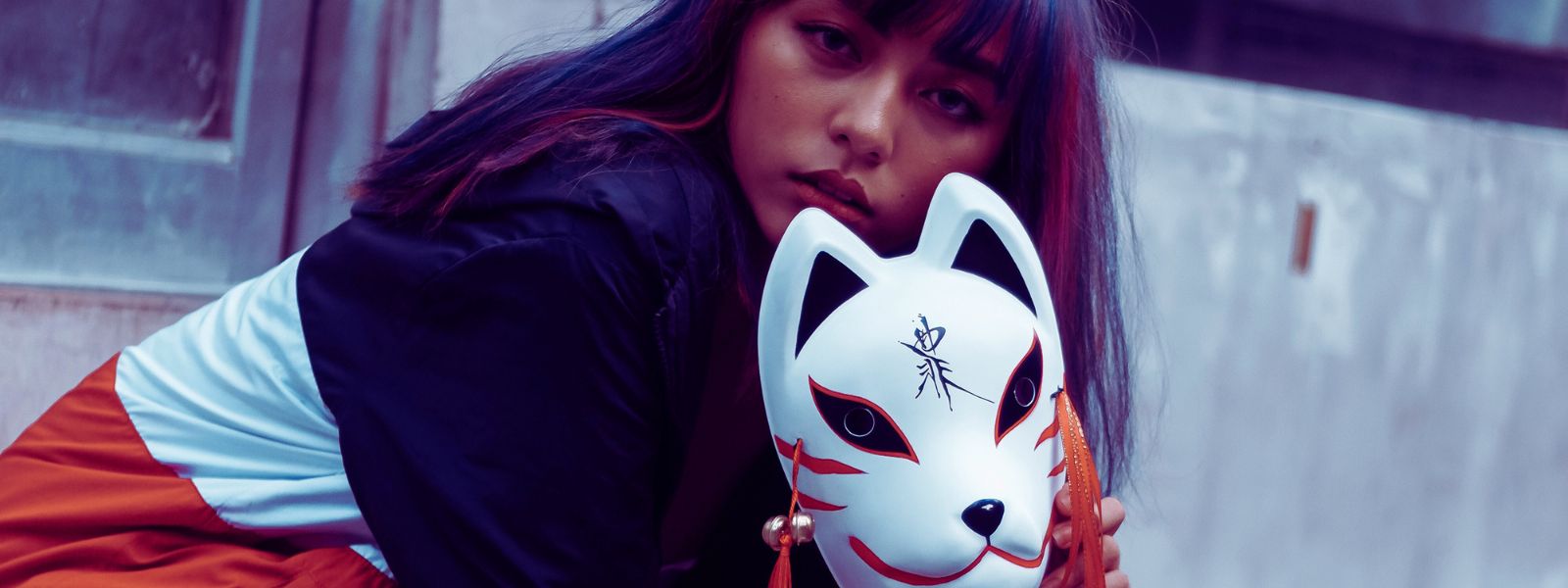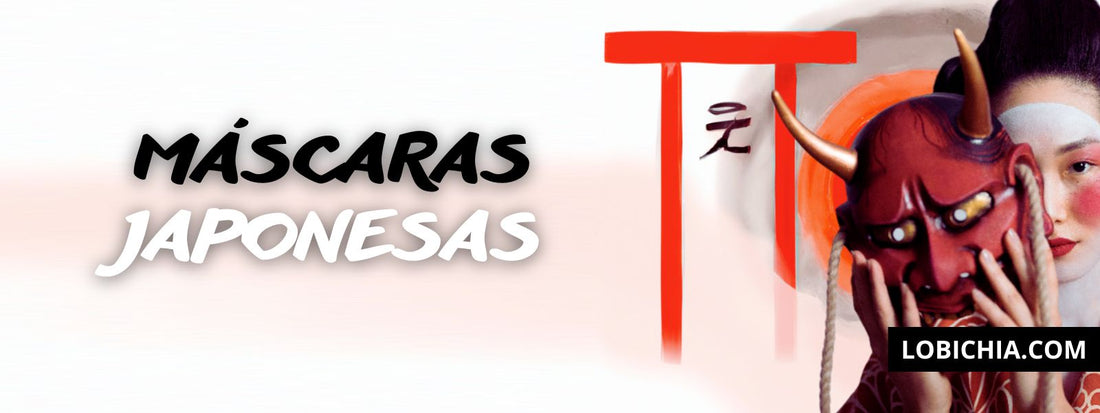Japanese masks, steeped in history and packed with symbolism, have become a hallmark in the world of streetwear. Their intriguing fusion with urban fashion has transformed them into an accessory that perfectly balances between the aesthetic and the traditional. Do you want to add a touch of mystery to your look? These masks will allow you to express your style in a unique way. They have transcended their cultural origins to position themselves as an essential element in contemporary streetwear, highlighting the lasting influence of Japanese culture on global fashion. In the streetwear universe, these masks give a unique character to your appearance. Each one of them embodies a character, an emotion or a spirit of Japanese culture, which gives them a deep meaning. But, they are not only an accessory, they are also an artistic manifestation resulting from intricate carving and painting techniques. Japan has been a pioneer in the fusion of fashion and culture, with innovations such as Lolita fashion or the Kei visual aesthetic, and masks are a vital component of this trend.

The fascinating origin of Japanese masks
Immersing yourself in the world of Japanese masks is like traveling back in time. These enigmatic pieces of art have their birth in ancient times, where they served as a means to represent deities and characters in rituals and theaters. But their function went beyond decorative, they were a sacred element that connected humans with the divine.
As the centuries passed, these masks not only survived, but became a fundamental pillar in Japanese artistic tradition. They have been able to adapt and evolve, especially in Noh and Kabuki theater, two of the most emblematic theatrical forms of the country of the rising sun.

The importance of masks in Noh theater
Noh theater is one of the cultural jewels of Japan, one of the oldest theatrical forms preserved to this day. This type of theater is characterized by its minimalist aesthetics and a deep emotional charge. We could not understand Noh theater without the presence of masks, which allow the actors to assume various roles and give life to the characters.
The role of masks in Kabuki theater
On the other hand, in Kabuki theater, masks have a more limited role, giving way to intense makeup that adorns the actors' faces. Despite this, masks are not completely absent. They are used to represent supernatural characters or characters of a different gender than the actor.
"Masks, created centuries ago, remain essential in Japanese culture and have found a place in modern fashion."
Japanese masks are much more than just decorations. They are sacred, artistic and an integral part of Japanese culture. And the most interesting thing is that, despite the passage of time, they are still relevant today. You can find them both in theater and in fashion, especially in streetwear, demonstrating once again their ability to adapt and reinvent themselves.

Enter the fascinating world of Japanese masks
The rich tapestry of Japanese culture provides us with a wide range of masks, each with its own symbolism and purpose.
Noh
Noh masks are used in Japan's oldest form of theater. They represent a wide variety of characters, from women and old men to demons and spirits. Each mask is meticulously carved and painted by hand, evidencing the mastery of the artisans.
Men-yoroi
Men-yoroi masks were worn by samurai both for protection and to instill fear on the battlefield. These masks, reflecting the rank and status of the wearer, were characterized by their detailed design, sometimes even adorned with mustaches and beards made of animal hair.
Kitsune
Kitsune masks represent foxes, considered messengers and servants of the rice god, Inari. It is believed that these foxes can transform into humans, and these masks are used in rituals and festivals to attract good fortune.
Hannya
Hannya masks portray jealous or resentful women who turned into demons. They symbolize human passion in its most extreme form and are commonly used in Noh and Kyogen theaters.
Understanding these Japanese masks not only enhances their aesthetic appeal, but also allows us to more deeply appreciate the cultural legacy they represent.

Discovering the charm of Japanese masks in streetwear and personal style
Japanese masks, steeped in history and symbolism, have found a special place at the heart of contemporary fashion and streetwear. But have you ever wondered how they are incorporated into streetwear and personal style? Join us to explore it.
These masks are much more than just an accessory. In today's fashion world, they can be the perfect medium to make a style statement, instill mystery, or even express social criticism.
A powerful means of style expression
Japanese masks are a powerful resource to define your style. They offer a variety of designs that can fit a wide range of styles, from alternative to classic.
Add a touch of mystery
The masks provide an intriguing element of mystery. In the world of streetwear, a Japanese mask can help you create an intriguing and unique look.
A medium for social criticism
Some Japanese masks are used as a way to express social or political criticism. For example, the Hannya mask can be a powerful statement against sexism.
As for how they are worn, the options are endless: they can be worn as a necklace, in the hand, tied around the waist, hung on clothing or in backpacks. In any case, the mask is always a highlight. The presence of Japanese masks in streetwear is a fascinating testimony of how fashion can merge cultures and eras, integrating traditional elements in a modern and urban context.
The art of creating Japanese masks
Have you ever wondered how Japanese masks are made? Let's discover the meticulous process behind its creation.
The choice of wood is essential . Craftsmen prefer soft, light woods such as paulownia or hinoki for their durability and resistance to cracks.
The wood is then carefully carved . This process can take weeks, as every detail counts. It is at this moment that the mask begins to come to life, reflecting its unique character and emotions.
After carving, the mask is polished and varnished . Some are painted, while others are left in their natural state to highlight the beauty of the wood.
It is worth noting that many of these masks are made by artisans who have dedicated their lives to perfecting their craft. Their skill and dedication are clearly visible in every piece they create.

Finally, the finishing touches are added, which may include fabric applications, hair, ropes and other decorations characteristic of each type of Japanese mask. Creating Japanese masks is a laborious task that requires patience, skill and great dedication. Each mask reflects the rich Japanese culture and tradition.
From Tradition to Contemporary Streetwear
In recent years, Japanese masks have found a place in contemporary streetwear culture. This modern adaptation of an ancient art has led to the creation of masks that combine traditional Japanese aesthetics with trendy elements.

In short, Japanese masks are more than just fashion accessories in streetwear. They are deeply cultural objects with centuries of history and meaning. Each mask has a unique identity and purpose, telling its own story and reflecting the spirit of tradition and modernity that characterizes Japanese culture.




